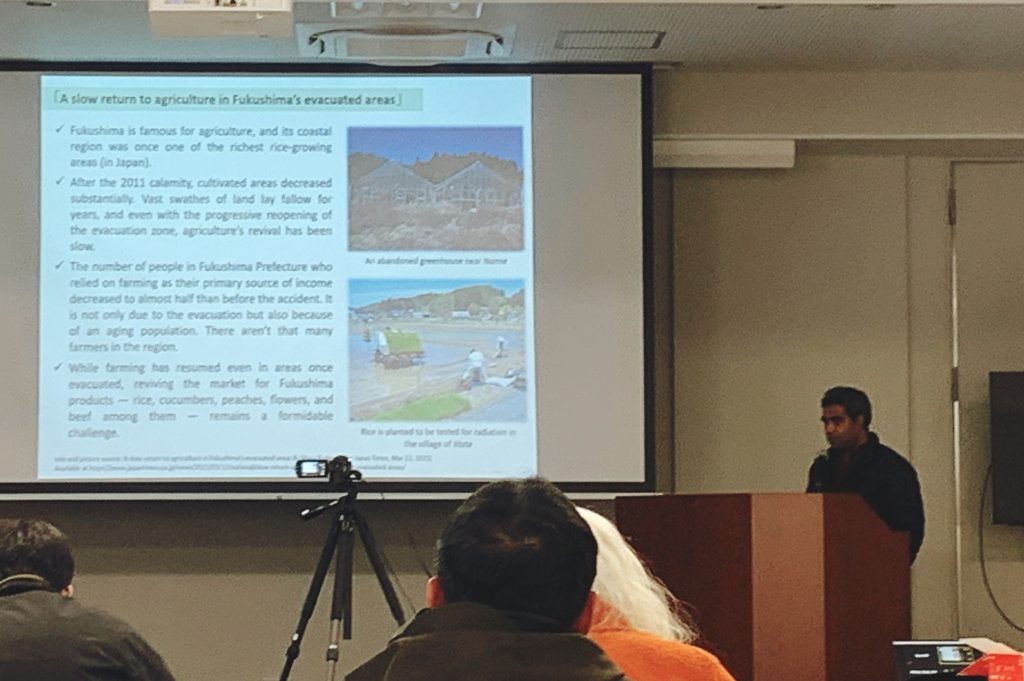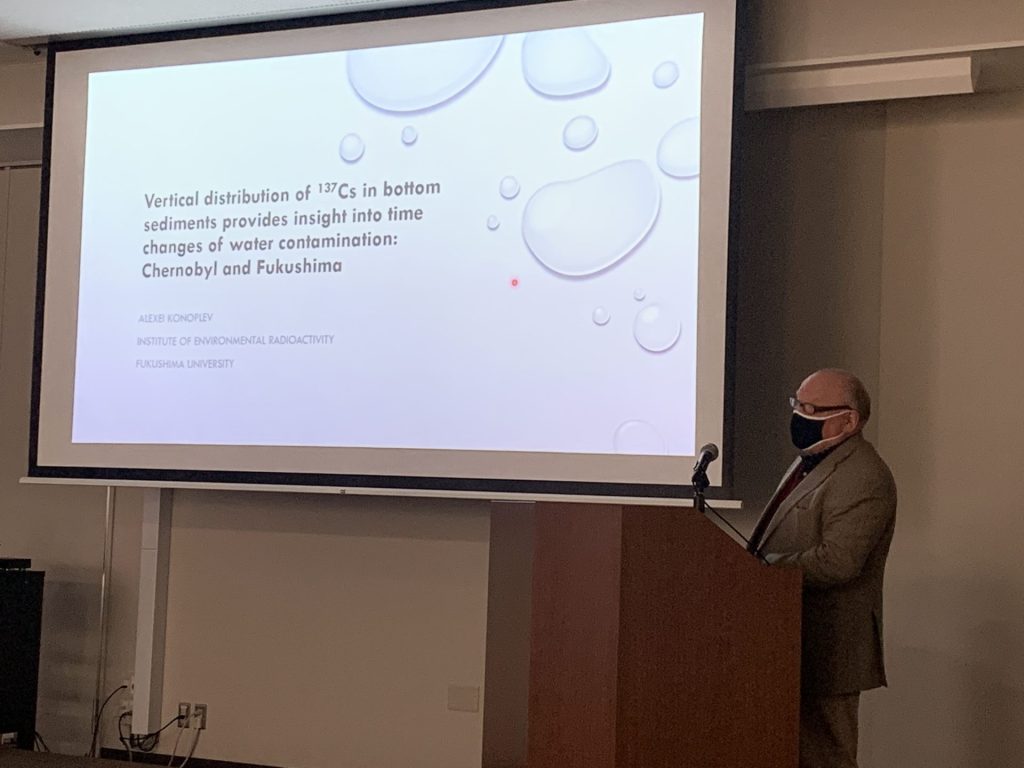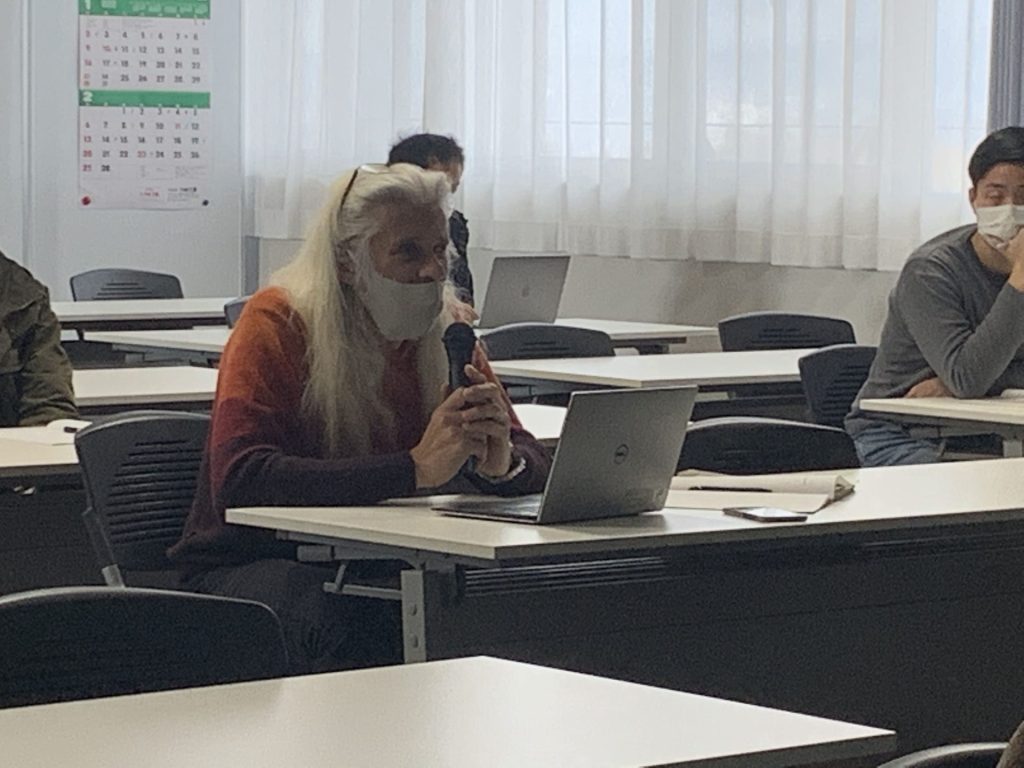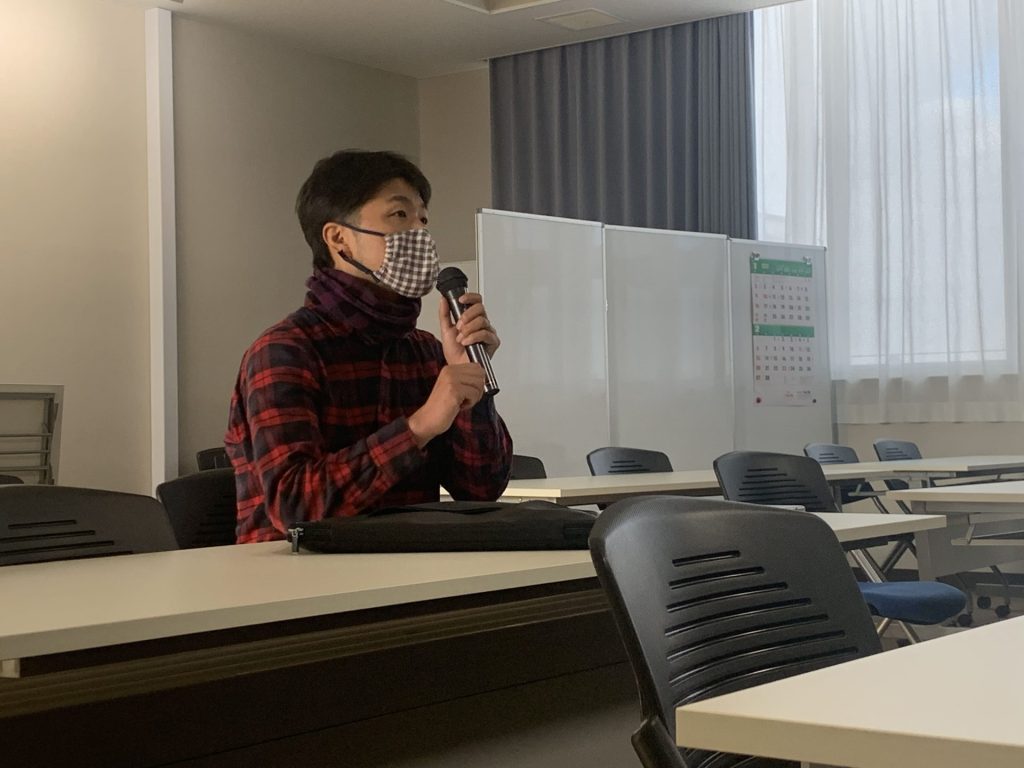January 24, 2022, we held the 9th IER Seminar of FY2021 <Associate Professor RAHMAN, Project Professor KONOPLEV>
Date & Time
Mon. January 24, 2022, 2:00 pm – 3:00 pm
Speaker
Associate Professor, Ismail RAHMAN
Project Professor Alexei KONOPLEV
(Presentation order)
Title
Management of the contaminated land area with bioenergy crops (RAHMAN)
Vertical distribution of 137Cs in bottom sediments provides insight into time changes of water contamination: Chernobyl and Fukushima (KONOPLEV)
(Presentation order)
Institute of Environmental Radioactivity (IER) regularly holds the IER seminar, in which the faculty members report on their research results to facilitate their research activities and communication. The 9th IER Seminar of FY2021 was held on January 24, and Associate Professor Ismail RAHMAN and Project Professor Alexei KONOPLEV gave presentations on their research activities. The seminar was attended by 21 researchers and graduate students, including online attendees.
Associate Professor, Ismail RAHMAN, gave a presentation about “Management of the contaminated land area with bioenergy crops.” His research aims to immobilize contaminants in the soil to prevent erosion, runoff, and spread by wind. Management of radionuclide-contaminated land area has been a critical issue in Fukushima after the Fukushima Daiichi Nuclear Power Plant accident. A bioenergy crop, Erianthus arundinaceus, has been evaluated for its efficiency in stabilizing radiocesium in soil. Radiocesium is transferred from soil to roots of the Erianthus plants and can then be transferred to the above-ground plants. However, the translocation of radiocesium from roots to aerial parts of Erianthus is very low, indicating the biomass is less contaminated and can be used as a source of bioenergy production. Some preliminary experimental data on the tolerance capability of wild grass plant species towards anthropogenic input of excess radiocesium in soil have also been reported. However, since that study was conducted in garden soil, future studies will need to investigate the effects in farmland soil.
Project Professor, Alexei KONOPLEV gave a talk “Vertical distribution of 137Cs in bottom sediments provides insight into time changes of water contamination: Chernobyl and Fukushima”. Bottom sediments of lakes and dam reservoirs can provide an insight in understanding the dynamics of 137Cs strongly bound to sediment particles. On this premise, a number of cores of bottom sediments were collected in deep parts of lakes Glubokoe, Azbuchin and Cooling Pond in close vicinity of the Chernobyl NPP in Ukraine, in Schekino reservoir (Upa River) in Tula region of Russia (2018) and in Ogaki reservoir (Ukedo River) in Fukushima contaminated area (2019). Layers of bottom sediments can be attributed to certain time of suspended particles sedimentation. With 137Cs activity concentration in a given layer of bottom sediments corresponding to 137Cs concentration on suspended matter at that point in time, we were able to reconstruct the post-accidental dynamics of particulate 137Cs activity concentrations. Using experimental values of the distribution coefficient Kd, changes in the dissolved 137Cs activity concentrations were estimated. The estimates of particulate and dissolved 137Cs concentrations are in reasonable agreement with monitoring data and predictions using the semi-empirical “diffusional” model.
After the presentations, various questions and opinions were exchanged with each presenter.




